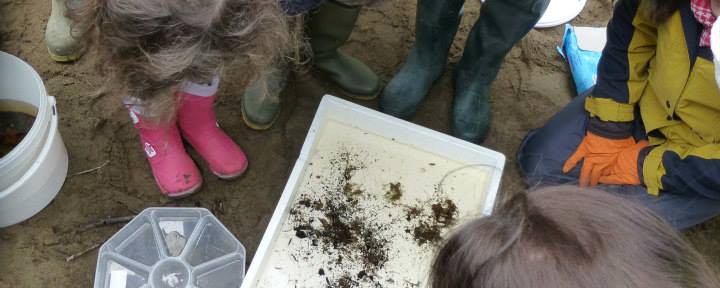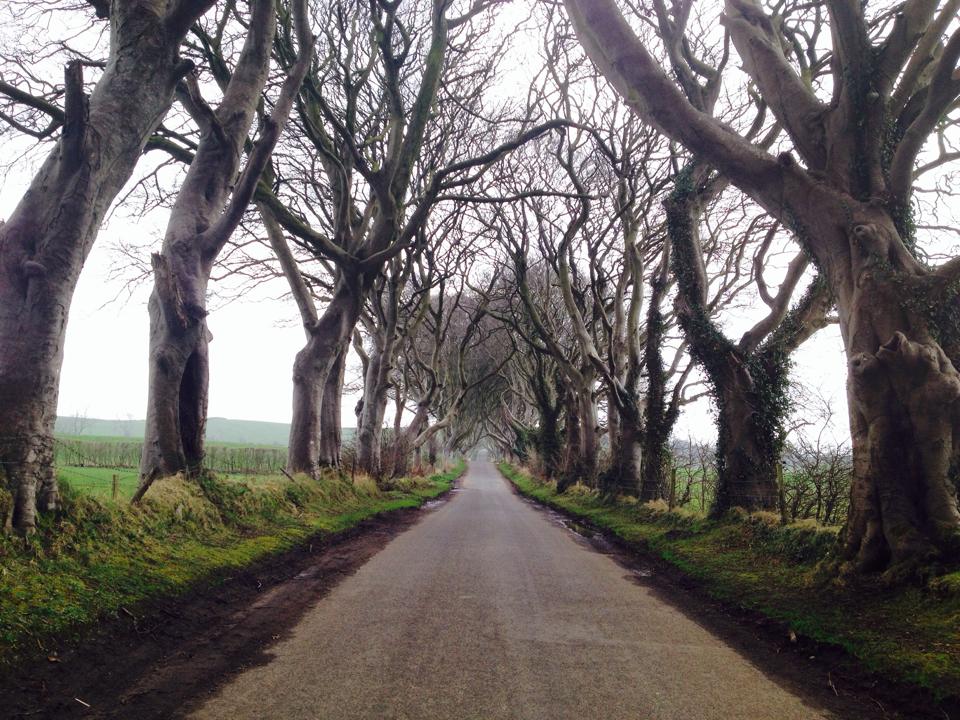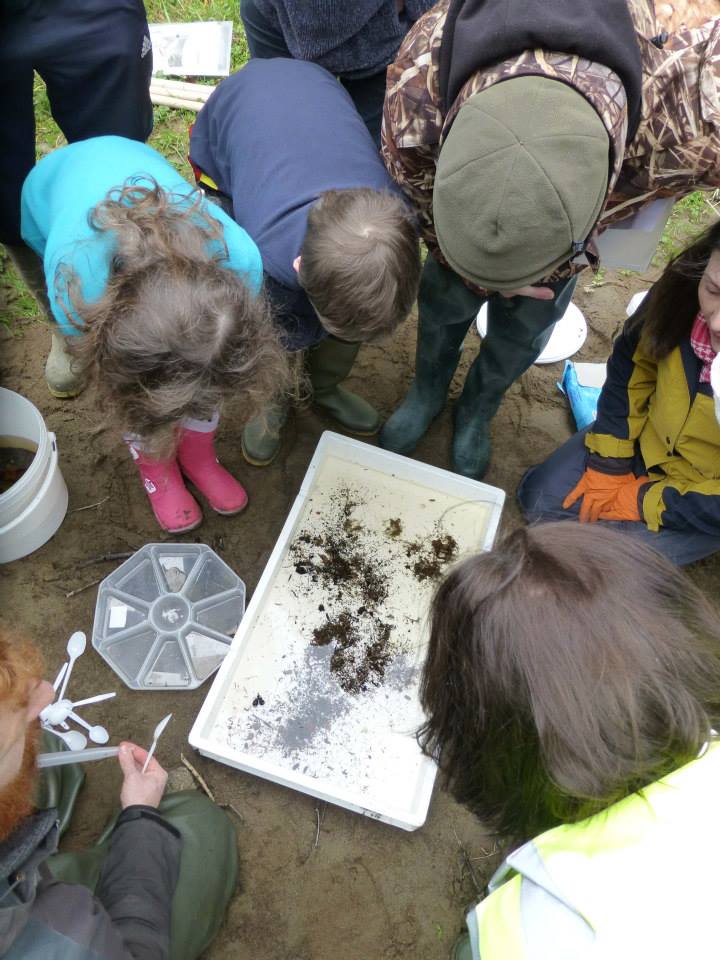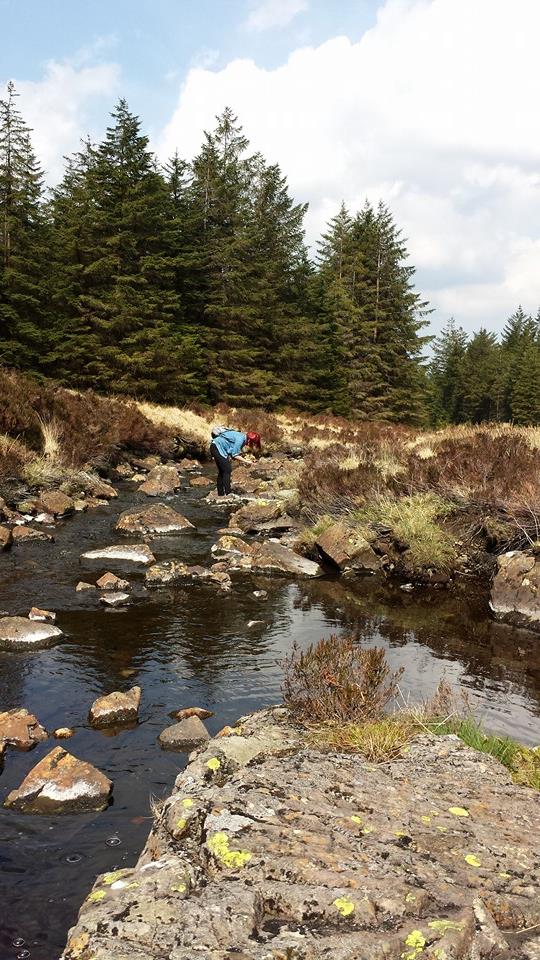
Spring has finally made it to Northern Ireland, this means that I’ve been busy, busy, busy! I’m just finishing my second stint with the NIEA and we’ve been out sampling invertebrates, alkalinity and diatoms throughout Northern Ireland’s rivers. So far out of the grand total of 272 spring sampling sites, 209 have been taken so far, and by the end of next week it could very easily be 230, so it won’t be long now until it’s all wrapped up. Despite how busy it’s been I’ve been having a great time here (or perhaps because of!), I’ve been swatting up my invertebrate identification and I’ve been allowed to sort through samples officially which is great, given I’ve only been at it 5 months they have been getting second checked, but my invertebrate identification has really come a long way and I think I’m just getting the hang of the different cased caddis and stonefly families at last, yay!

Not strictly relevant, but a shot taken whilst out sampling on the North Coast with NIEA. Recognise this from anywhere?
Beyond this, outwith (apparently that’s a very Scottish word, it means “outside” for anybody puzzled by it) but related to my apprenticeship, I have become a Riverfly Monitoring Initiative (RMI) tutor with the Riverfly Partnership. I ran a workshop a few weeks back under the supervision of former Natural Talent Riverfly Apprentice Louis Kitchen for the Faughan Valley Landscape Partnership. Thankfully it went well, and the volunteers all seemed really enthusiastic (some photographed below), so hopefully that’s one more RMI group up and running in Northern Ireland.
Aside from this I’ve been zooming around quite a lot trying to do some additional swatting. So I zoomed over to Scotland the other week for the RAFTS conference in Perthshire which was particularly interesting especially with the release of their official stocking policy, and the cheeky hints that people were giving in relation to smoult trapping research were tantalising. Following this I also went down south to the IBIS and IFM conference in Co. Meath which focused on Applied Research in Fisheries Management, in which the phrase “environmental DNA” definitely made my ears prick up as there is discussion as to its potential use in surveying loughs/lochs for fish, as opposed to using gill netting which involves nearly certain death for the fish caught.
Next week I’m signed up to do my Outdoor First Aid in Inverness, following by the SFCC “Introduction to Electrofishing” qualification which I’m very excited about. Electrofishing essentially involves putting an electrified anode through the water (which is very carefully controlled), which draws fish to the surface to be netted. This technique is primarily used by Rivers and Fisheries Trusts to monitor the level of recruitment in a river, and is carried out in the summer to assess parr numbers at potential salmonoid breeding sites. Data collected can then be used to examine overall trends, determine problem areas or key important sites, identify sites for habitat improvement and barrier removal, and also be used improve river management practices.
Hopefully I’ll have an opportunity to put my new skills into action this summer at the Ballinderry, but obviously the Invertebrates are my first priority. I’m currently working on reinvigorating the RMI group and providing them with some extra invertebrate ID training, but I’m also trying to come up with some funding to create a volunteer appreciation programme. If anybody has any hints or tips in doing so, please contact me!
Thank you very much to the NIEA River Ecology department for hosting and training me these last few months, it’s been a great experience and I really appreciate all the time and effort everybody has given in getting me up to speed. Given that before I started I couldn’t remember which way around it was, “do mayflies or stoneflies have two tails?”, that I can ID those to family level along with a whole host of other freshwater invertebrates in the space of five months is amazing.
Until next time,
Emma


